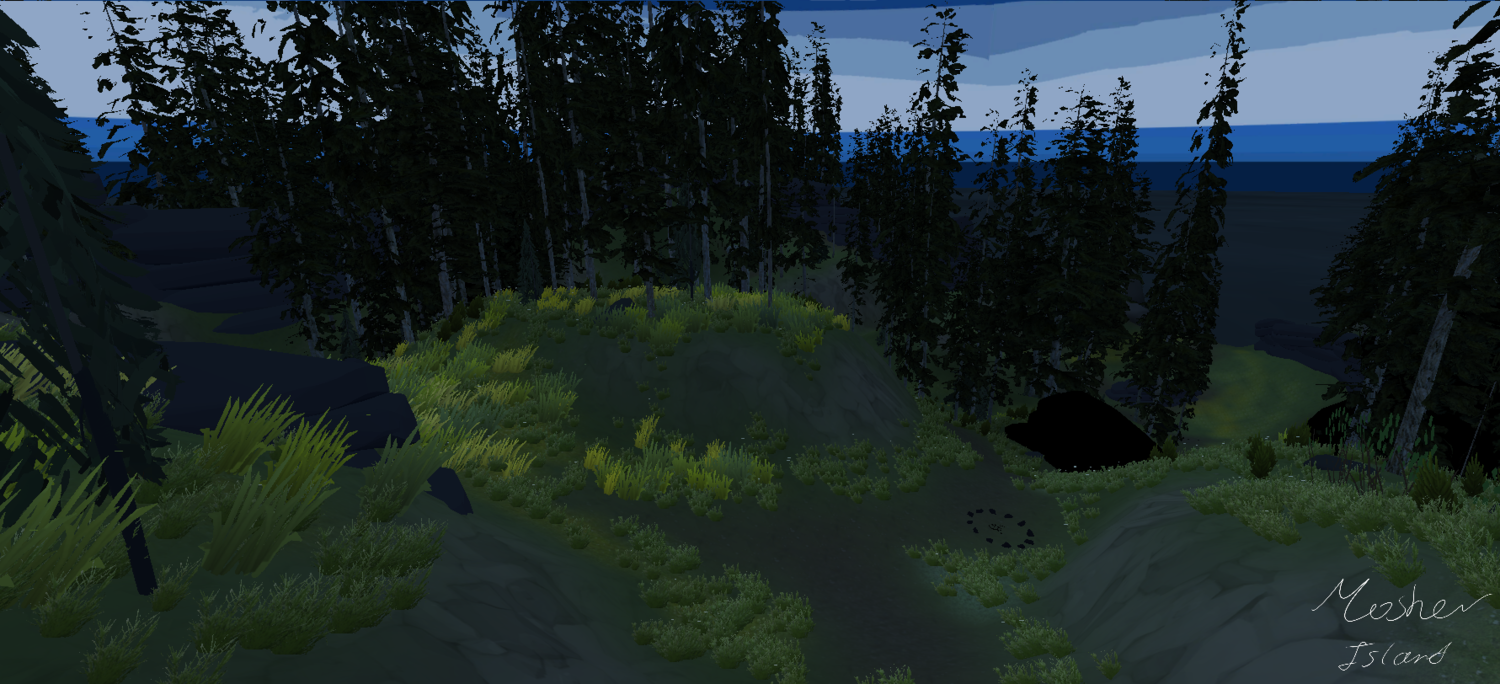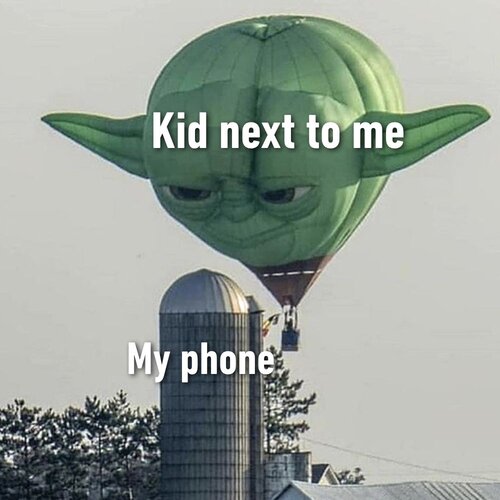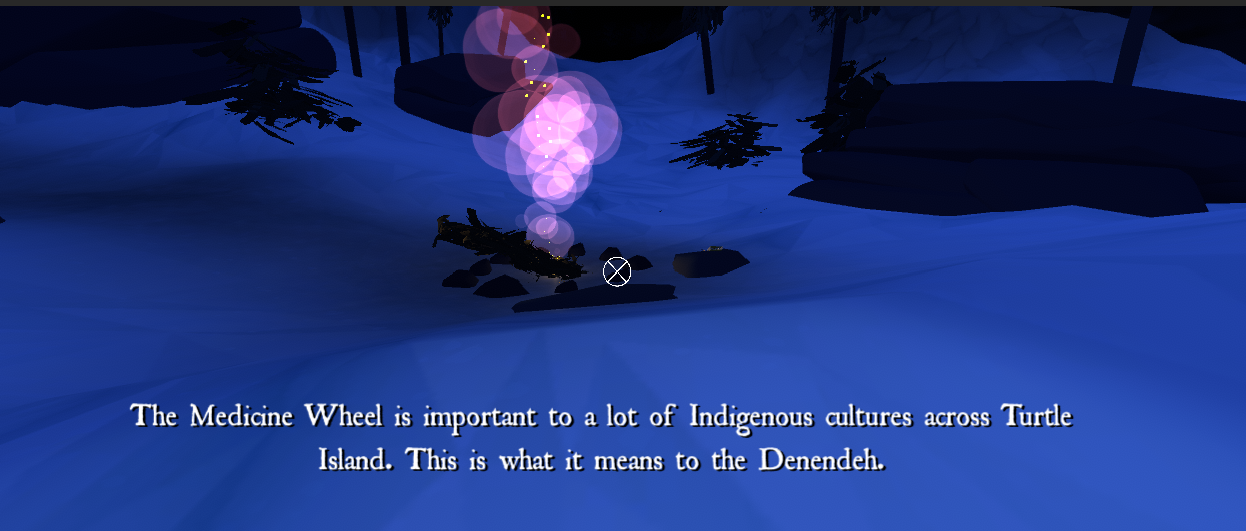The Mystical Machinery of Mosher Island

WARNING: This review contains spoilers, but you can play Mosher Island first here.
From the ancient events of Olympia and its outstanding legacy, to every bustling grade school recess, to the unfathomably powerful computers in everyone’s pockets these days, it’s always been apparent that humans simply adore games.

Admit it! You absolutely DO got games on your phone (See meme to the right).
Theatre’s strength as an artistic medium is generally understood through its artist-audience relationship characterized by intimacy, immersion, and the way we’re implicated in the events in real time. In the transition to digital forms the way traditional theatre is simply tossed on screen eviscerates that two-sided relationship. If theatre remains a poor copy of film and television in the digital world, I see little reason for it to occupy that space at all.
I’m here to propose that theatre could be doing a lot better if it picked up a controller and joined the game.

Joining this year’s Kick & Push Festival, Mosher Island is a brilliant example of the possible digital resuscitation of theatre. Video games are fundamentally different from film and television in the ways they quite literally engage the participant. The audience becomes a part of the experience, the immersivity and interactive nature at the heart of the medium is not unlike theatre! Player experiences are molded by what you bring to the game and it rarely exists in any meaningful way without the player’s participation.
Inspired by the actual island in Yellowknife of the same name, Mosher Island is a first-person survival and harvesting game created by Casey Koyczan, Alex Dault, Ruslan Makarov, and Harshid Saini. Your progress and lifespan are dependent on collecting sacred medicines while maintaining your source of heat as you explore a stunningly beautiful virtual rendition of Mosher Island. The gameplay itself is the creation of Dault, the primary game designer whose technical skill merges with Koyczan’s concept and sound design almost seamlessly.
The sections or levels of the game through which the player traverses open up one by one, easing the player into exploring the whole island in a pace which, along with clear instructions, makes the game and it’s environment approachable, even to the most inexperienced of gamers. We have Makarov to thank for the gorgeous yet tricky level design that keeps you on your toes. Each sacred plant produces a unique audio instrumental cue that crescendos as you approach them. Unbeknownst to new players, the different audio snippets are actually parts of a larger harmony/song, one that reveals itself at the end of the game in a powerful fashion at the completion of the ‘feeding the fire’ ceremony. This practice from the Dene First Nations group of the Western Arctic serves as the inspiration of the game.
The game sustains a mystical essence despite its approachability, core to the experience is a rare feeling of wonder. During the festival’s own ‘Let’s Play’, Koyczan discussed how integral the notion of mysticism is to the game and understanding Indigenous culture. And I must say I felt a genuine sense of resolution when I finished Mosher Island.
Aside from the central starting point that hosts a ritual offering fire, the island is divided into four sections—one for each cardinal direction, representing each quadrant of a Medicine Wheel, the core motif of the game. Even the ever present cursor in the middle of your screen is a small circle with thin quadrants reminiscent of the Indigneous symbol. The essence of the game is a graceful deployment of lessons covering a basic understanding of a Medicine Wheel, how each of its quadrants represents its own season, animal, medicine, element, and stage of life, to name a few.
The term Medicine Wheel was coined by non-Indigenous North Americans as a blanket term for what was originally called Sacred Circles or Sacred Hoops. There are regional and cultural differences amongst Indigenous communities that imbue their Sacred Circles with their own uses, significances, and nuances. Thousands of unique symbolic circles have been utilized by a multiplicity of Indigenous groups spanning from Alaska to the southernmost tip of our continent.

The fundamental similarity between these symbols is that they all represent the interconnectivity of every aspect of one’s being, a holistic display of one’s health and the cycles of life, including one’s connection to nature. That all being said, from here on out I’ll be using the term Medicine Wheel, as the creative team behind Mosher Island consistently employs the term both in and out of the game, and far be it from me to challenge that decision!
Any explanation I could present here couldn’t hold a candle to the powerful delivery of Koyzcan’s (self-proclaimed) ‘epic voice’. His booming and layered in-game narration (inspired by Shadow of Colossus for PlayStation 2) guides the player through the land with cultural knowledge of the environment. Mosher Island really makes you use your eyes and ears to hunt the glittering plants amongst the immersive environment. For this reason, headphones are absolutely recommended. The ambient soundscapes specific to each of the biomes are something of a marvel, from the whizzing of mosquitos around your head, to the ever-important fires that breathe sighs of relief, to your own footsteps echoing around you. The exploration of these details that strike a note of wonder enables that feeling of mysticism made possible by the game.
Saini’s design of the skyscape above the player’s head is jaw-dropping work. Admittedly, it was a mouse glitch that initially forced my attention upwards. But what I saw kept me from moving my mouse away as I lingered on the beautiful frame for so long that my fire exhausted itself and I experienced my first in-game death, a pretty subtle yet powerful event wherein your screen fades to black as your character freezes to death. The notion of memory is a significant aspect of survival as your death does not hinder your progress, you simply continue from the ritual fire from where you left off. The more you remember from your past attempts, the easier the game will be for future runs.
The central motif and lessons of interconnectedness in combination with the interface of this medium is mind-boggling. Mosher Island fantastically balances the pressures of surviving with the possibility of processing the enjoyable in-game environment. Despite the fact that there are no actual stakes for a player, the feeling of being lost that’s core to the experience brings a genuine panic when your fire goes out, there’s an exciting fear and a push to resolve your situation, to try harder.
Koyzcan’s impressive concept that takes advantage of the synthesis between the medium and the message of the art is proof that theatre has a place online. I wasn’t just observing the story, I was quite literally searching within it! I was forced to pay attention, to remember locations, to strain my ears for clues, to explore what was being presented to me. Mosher Island generated an audience experience where I was in control of driving the narrative, and the way I was asked to be present left a much stronger impact than sitting back and clicking a play would.
Because the impact and interface of this experience is incredibly intentional, the attention to detail curates a state of wonder that guarantees the feeling of mysticism found on the island, off and online. This well-executed synthesis is what facilitates the fabulously mystical experience of Mosher Island.
Have any thoughts about this piece? Contact the writer at hamza@kingstontheatre.ca!